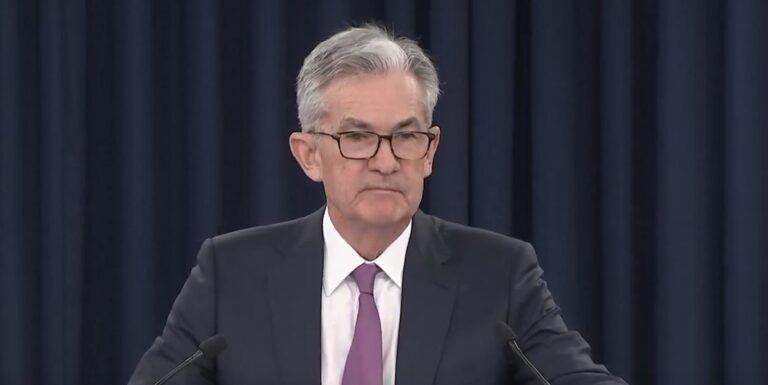According to a report published in The Wall Street Journal on April 10, the Federal Reserve faces new challenges in its ongoing battle against inflation, complicating its path to securing a soft economic landing. The WSJ article highlights an inflation report that surpassed expectations, posing significant implications for the Fed’s interest rate policies.
The article cites solid hiring figures and the possibility that inflation may stabilize around 3%—higher than the Fed’s 2% target—as factors that might delay any potential rate cuts. This scenario suggests that the Fed might need to see more pronounced economic cooling before it can comfortably adjust rates.
Alan Detmeister, a UBS economist quoted in the WSJ article, points to recent data as a reason for reduced confidence in inflation returning to the 2% target soon. The report reflects on the optimism that marked the start of the year, with inflation cooling more quickly than anticipated, challenging the notion that the final phase of inflation reduction would be the most difficult.
The WSJ article by Nick Timiaros outlines two potential futures: one in which inflation declines in a “bumpy” fashion, allowing for a delayed and slower pace of rate cuts, and another in which inflation remains closer to 3%, potentially eliminating the justification for rate reductions without clear signs of economic deceleration.
The WSJ article also details Chair Jerome Powell’s cautious stance, emphasizing the Fed’s desire for additional data before considering rate adjustments.
The WSJ article noted that although the March inflation report didn’t stand out on its own, the context of unexpectedly strong figures in January and February adds complexity to the inflation outlook, raising questions about the Fed’s ability to implement rate cuts this year.
Financial markets’ reactions, explored in the WSJ article, indicate a recalibration of expectations, with analysts at major institutions revising their forecasts in light of the March inflation report. For instance, Barclays analysts are forecasting a singular rate cut to occur in September.
Blake Gwinn, an interest rate strategist at RBC Capital Markets, said, “Our initial prediction included three rate cuts, with a June reduction being crucial. Should we move past June without a cut, our expectations adjust towards a potential first reduction in December.”
The report concludes by examining the broader debate within the Fed regarding the drivers of current inflation trends, with some officials advocating for a granular, bottom-up analysis while others argue for a broader, top-down perspective.
Earlier today, in a pivotal speech, International Monetary Fund (IMF) Managing Director Kristalina Georgieva urged central banks to exercise caution against prematurely lowering interest rates amidst ongoing efforts to curb inflation. Addressing global economic policymakers ahead of their biannual meeting, Georgieva highlighted the progress achieved in reducing inflation rates through increased central bank interest rates over the past year. However, she emphasized the risks associated with easing monetary policies too soon, warning that premature actions could trigger inflationary pressures, potentially requiring further monetary tightening.
According to an article published in The Wall Street Journal earlier today, this cautionary stance came in the wake of yesterday’s March 2024 US CPI report, which indicated a rise in inflation in March, marking the third consecutive month of higher-than-expected consumer price increases.
Despite predicting a gradual decrease in inflation, which might enable rate cuts in major advanced economies by the latter half of 2024, Georgieva advised patience, particularly for central banks in affluent nations like the U.S. Meanwhile, the European Central Bank maintained its key interest rate, hinting at possible rate cuts in June.
With the IMF set to update its global economic forecasts, Georgieva optimistically noted that the new projections would reflect slightly improved growth figures, buoyed by robust activity in the U.S. and various emerging markets. These forecasts contrast slightly with the IMF’s January prediction, which anticipated a global growth rate of 3.1% for both this year and 2025, slightly up from 2023’s estimate.
Georgieva also discussed the potential dampening effect on global economic growth due to shifts in trade towards geopolitical allies and cautioned against the indiscriminate use of industrial policy, emphasizing the need for caution in government interventions absent clear market failures.









